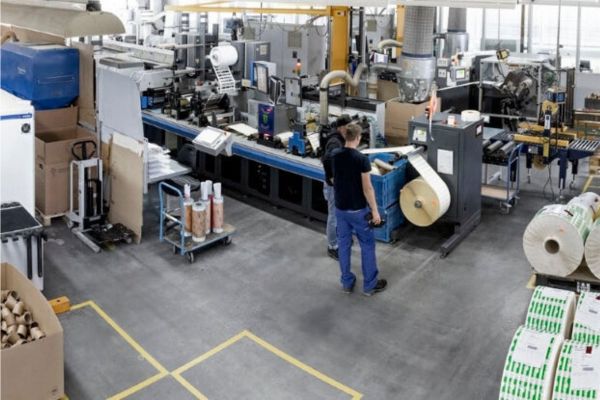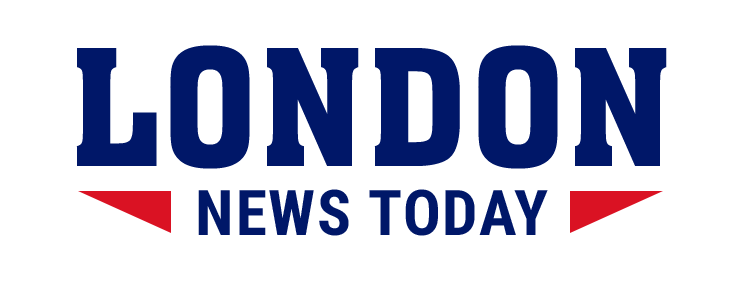Industrial Labels Market Trends: IoT Integration, Sustainability, and Regional Expansion

The industrial labels market is anticipated to grow significantly over the forecast period. These labels play a crucial role in asset tracking, product identification, and ensuring compliance with safety regulations. They are known for their durability, resistance to solvents and abrasion, and capability to withstand extreme temperatures ranging from -292°F (-180°C) to +730°F (+388°C). This makes them ideal for use in demanding environments such as automotive, military, aerospace, and oil and gas industries.
Increasing Demand for Efficient Identification and Tracking Solutions
Industrial labels are vital for product identification, tracking, and safety across various industries, including manufacturing, automotive, aerospace, electronics, and logistics. The demand for efficient and reliable labeling solutions is driven by the need for enhanced operational efficiency, regulatory compliance, and brand protection.
Technological Advancements in Labeling Solutions
The integration of advanced technologies like RFID (Radio-Frequency Identification), QR codes, and barcoding has transformed the industrial labels market. These technologies provide superior tracking, traceability, and data management capabilities, making them indispensable in modern industrial applications.
Market Growth and Projections
The global industrial labels market is set for significant growth, with projections showing an increase from USD 28.65 billion in 2023 to USD 48.50 billion by 2033, reflecting a Compound Annual Growth Rate (CAGR) of 5.51% from 2024 to 2033. This growth highlights the crucial role of industrial labels across various sectors. This comprehensive analysis explores the driving factors, emerging trends, and key segments contributing to the market’s development.
Key Trends and Findings in the Industrial Labels Market
The industrial labels market is experiencing dynamic changes influenced by technological advancements, consumer demands, and regulatory requirements. Key trends and findings include:
Flexible Printed Electronic Designs and Smart Labels
Transition to Commercial Production: Flexible printed electronic designs are moving from concept to large-scale production, enabling the creation of smart labels with enhanced functionalities. These labels incorporate low-power IoT technologies such as Bluetooth, LPWAN (Low-Power Wide-Area Network), and cellular technologies, improving tracking, monitoring, and data transmission capabilities.
Enhanced User Engagement with QR Codes and AR
Integration into Printed Labels: QR codes and augmented reality (AR) are revolutionizing user engagement. QR codes embedded in labels provide instant access to information such as websites, user guides, product details, and promotional videos, enriching the product experience through smartphone scans.
Sustainability and Traceability Initiatives
Driving Market Innovations: The global focus on sustainability is encouraging organizations to adopt waste-minimizing systems and practices that benefit society. In the industrial labels sector, traceability is vital for tracking goods and materials throughout the supply chain, enhancing visibility and promoting a circular economy. Automated labeling technologies support efficient traceability, contributing to sustainable practices.
Regional Insights
North America: This region is expected to grow at a CAGR of 5.27% during the forecast period, driven by robust demand from key sectors like automotive, healthcare, and logistics. Early technological adoption and strict regulatory compliance further support market growth.
Asia-Pacific: Dominating the global market with a significant share of 36.07%, the Asia-Pacific region benefits from rapid industrialization, urbanization, and emerging economies. Countries like China, India, and Japan are major contributors to the region’s market growth.
Market Segmentation
The report covers segments of the industrial labels market by material (metal, polymer, paper), type (warning/security labels, branding labels, weatherproof labels, equipment asset tags, others), mechanism (pressure-sensitive labeling, shrink sleeve labeling, others), printing technology (digital printing, analog printing), and end-use industry (electronics, food & beverage, automotive, healthcare, others). It also provides regional analysis (North America, Europe, Asia Pacific, Latin America, Middle East & Africa), offering the value in USD billion for these segments.
Conclusion
The industrial labels market is rapidly evolving with advancements in flexible printed electronics, IoT integration, and innovations like QR codes and AR. These technologies are reshaping user engagement and operational efficiencies across various industries. Additionally, the emphasis on sustainability and traceability is driving market innovations, positioning industrial labels as not only tools for compliance but also catalysts for sustainable practices. As regions like North America and Asia-Pacific lead in adoption and growth, the market continues to expand, presenting new opportunities and challenges for stakeholders.




